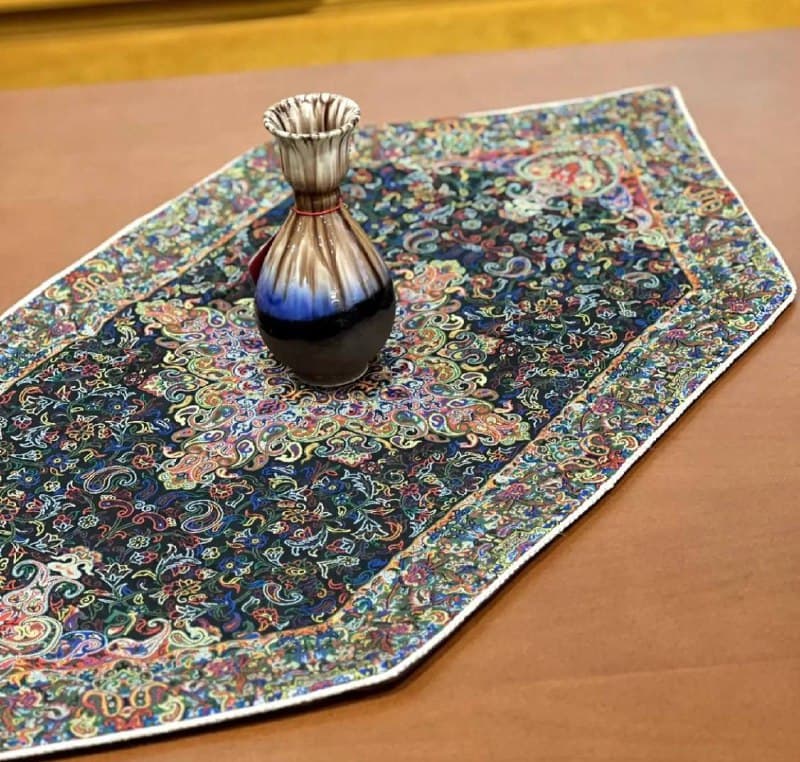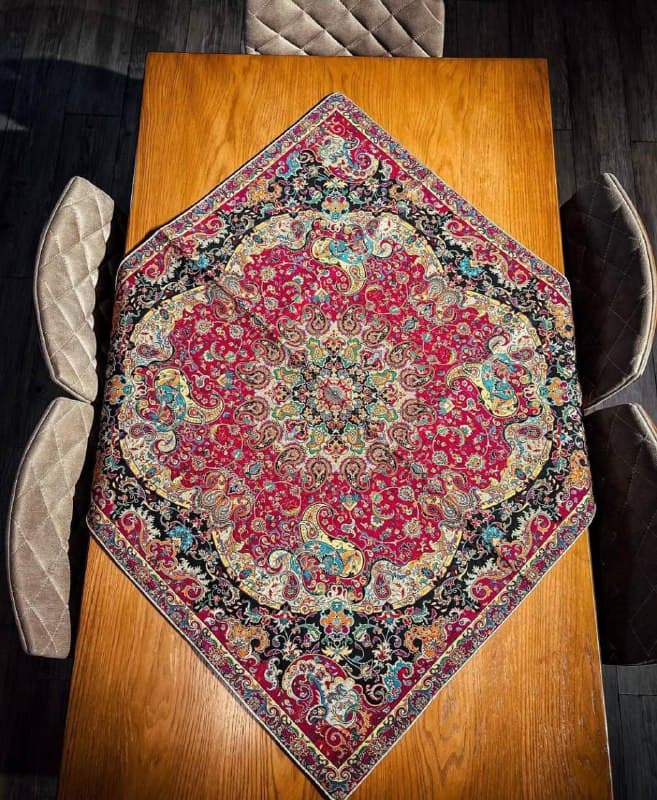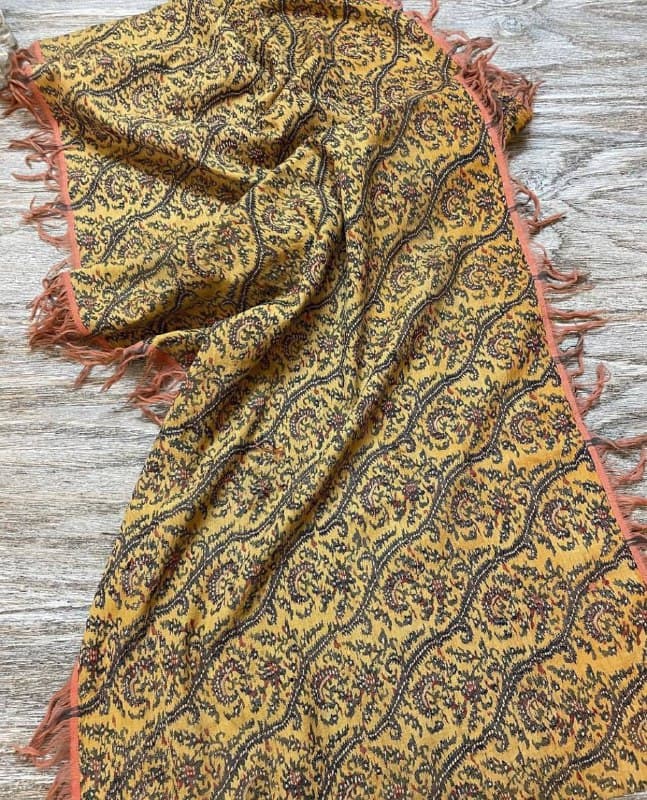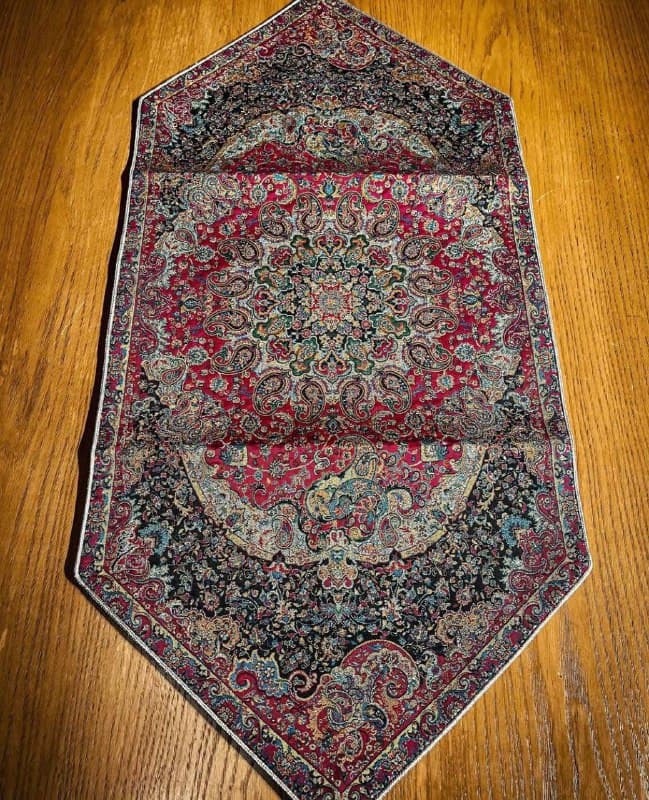The use of cashmere in the past and present
Cashmere is a luxurious and highly prized natural fiber derived from the soft undercoat of cashmere goats. It has been used in various forms for centuries and continues to be a sought-after material in both past and present contexts. Here’s a look at the historical and contemporary uses of cashmere: The use of cashmere in the past and present Cashmere weave tools and methods Iranian handicrafts, Isfahan, Tabriz, Kashan carpet design .

Historical Uses of Cashmere:
- Royalty and Nobility: Throughout history, cashmere has been a symbol of luxury and prestige. It was often reserved for royalty and nobility in many cultures, including in Persia (modern-day Iran), where it was woven into shawls and garments.
- Clothing and Accessories: In the past, cashmere was used to make clothing items such as shawls, scarves, wraps, and robes. These garments were highly valued for their softness, warmth, and elegance. Handicraft
- Trade and Export: Cashmere shawls, particularly those made in Kashmir (an Indian region renowned for its cashmere production), were exported to Europe during the 18th and 19th centuries. These shawls became fashionable accessories and were highly sought after by European elites.
- Decorative Items: Cashmere textiles were also used for decorative purposes, including as wall hangings and upholstery, adding an element of luxury and comfort to interiors. The use of cashmere in the past and present Cashmere weave tools and methods Iranian handicrafts, Isfahan, Tabriz, Kashan

Contemporary Uses of Cashmere:
Clothing: Cashmere remains a popular choice for high-end clothing. It is used to make sweaters, cardigans, coats, dresses, and even suits. Its softness and insulating properties make it an ideal material for winter wear. filigree
Accessories: Cashmere is widely used in the production of accessories such as scarves, gloves, hats, and socks. These items are not only functional but also fashionable.
Home Furnishings: Cashmere blankets, throws, and cushions are common in luxury home furnishings. They add warmth and a touch of opulence to living spaces. carpet
High-End Fashion: Luxury fashion brands often feature cashmere collections. Cashmere garments are known for their exceptional quality and comfort, making them desirable for consumers seeking premium fashion items.

Global Trade: The demand for cashmere has grown globally, with countries like Mongolia and China becoming major producers. Cashmere products are exported and sold worldwide, with consumers appreciating the material’s softness and natural warmth. backgammon
Sustainability: In recent years, there has been a growing focus on sustainable and ethical cashmere production. Efforts are being made to ensure the well-being of cashmere goats, reduce overgrazing, and protect the delicate ecosystems in regions where cashmere is sourced.
Blends: Cashmere is often blended with other fibers, such as wool or silk, to create fabrics with unique properties. These blends combine the softness of cashmere with the strength or luster of other materials.
Click to buy a silk carpet combining machine and handwork machine carpets.
Innovation: Technological advancements have led to innovations in cashmere processing and production techniques, enabling the creation of more affordable cashmere products while maintaining quality. The use of cashmere in the past and present Cashmere weave tools and methods Iranian handicrafts, Isfahan, Tabriz, Kashan
In summary, cashmere has a rich history as a symbol of luxury and continues to be valued in the contemporary world for its softness, warmth, and versatility. Its uses have evolved over time, from being a material reserved for the elite to becoming more accessible to a broader range of consumers, while efforts are made to ensure sustainable and ethical production practices. Saffron

Cashmere weave tools and methods use cashmere past present
Cashmere weaving, like other types of textile weaving, involves specific tools and methods. While cashmere itself refers to the type of wool, the weaving process typically uses various tools and techniques to create cashmere textiles. Here’s an overview of the tools and methods commonly used in cashmere weaving: saffron
Tools:
- Loom: The loom is the primary tool used in weaving, including cashmere weaving. There are different types of looms, such as handlooms, floor looms, and electronic looms, but they all serve the same purpose: to hold the warp (lengthwise) and weft (crosswise) threads in tension, allowing the weaver to interlace them to create the fabric. silk carpet
- Shuttle: The shuttle is a tool used to pass the weft thread (horizontal thread) through the shed (the opening created by the raised warp threads) on the loom. Shuttle designs can vary, but they are generally shaped to hold and release the weft thread smoothly as it is woven. The use of cashmere in the past and present Cashmere weave tools and methods Iranian handicrafts, Isfahan, Tabriz, Kashan
- Reed or Beater: The reed or beater is a comb-like tool that helps pack the weft threads closely together, creating a tight and even weave. It is used to beat down each weft pass after it is inserted.
- Warp Beam and Cloth Beam: These are two cylindrical beams on the loom. The warp beam holds the warp threads before they are woven, while the cloth beam collects the finished fabric as it is woven.
- Heddles: Heddles are used to create the shed, or the opening between the warp threads through which the weft thread is passed. Modern looms often have harnesses with heddles attached to them.
- Warp Threads: Warp threads are the vertical threads that are attached to the loom\’s warp beam. They provide the structural foundation for the fabric and are the threads that are lifted and lowered to create the shed.
- Weft Threads: Weft threads are the horizontal threads woven across the warp threads. They are passed through the shed using the shuttle and are responsible for creating the fabric’s width. use cashmere past present

Methods:
- Setting Up the Warp: The weaving process begins with setting up the warp threads on the loom. These threads are measured, wound onto the warp beam, threaded through the heddles and reed, and then tied to the cloth beam. pictorial carpet
- Creating the Shed: The shed is created by raising some warp threads while leaving others lowered. This is typically done using the loom’s harnesses and pedals. The shed is the opening through which the weft thread is passed.
- Inserting the Weft: The weaver uses the shuttle to pass the weft thread through the shed from one side of the loom to the other. The beater is then used to pack the weft threads tightly against the previously woven fabric.
- Repeating the Process: The process of creating the shed, inserting the weft, and beating it down is repeated row by row, gradually building the fabric. The pattern and design are achieved by selectively raising and lowering specific warp threads.
- Finishing: After weaving is completed, the fabric is typically removed from the loom, and any loose ends are secured and trimmed. The fabric may undergo additional finishing processes, such as washing, steaming, or pressing, to achieve the desired texture and appearance. The use of cashmere in the past and present Cashmere weave tools and methods Iranian handicrafts, Isfahan, Tabriz, Kashan

Cashmere weaving, in particular, involves the use of cashmere wool as the raw material, which requires careful handling and attention to detail to create the soft and luxurious cashmere textiles that are highly prized for their quality and warmth.
